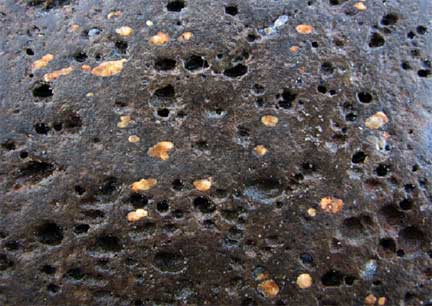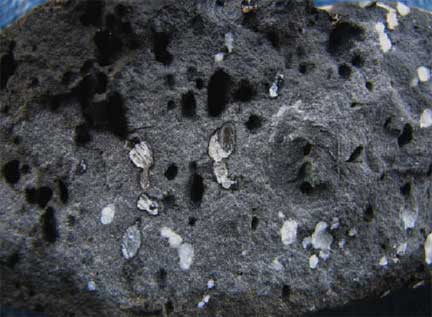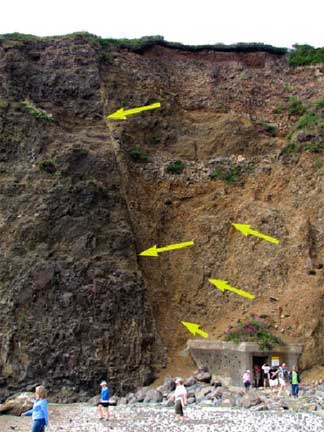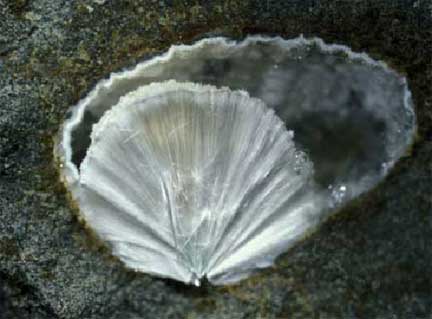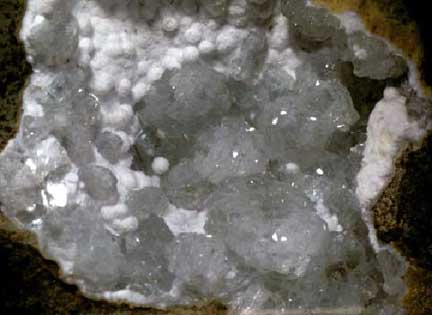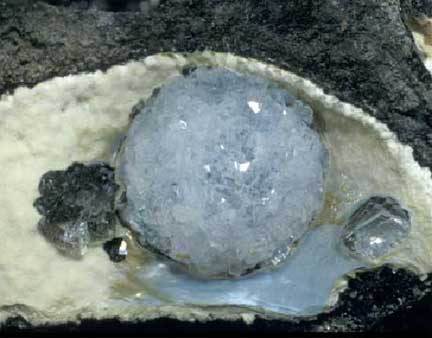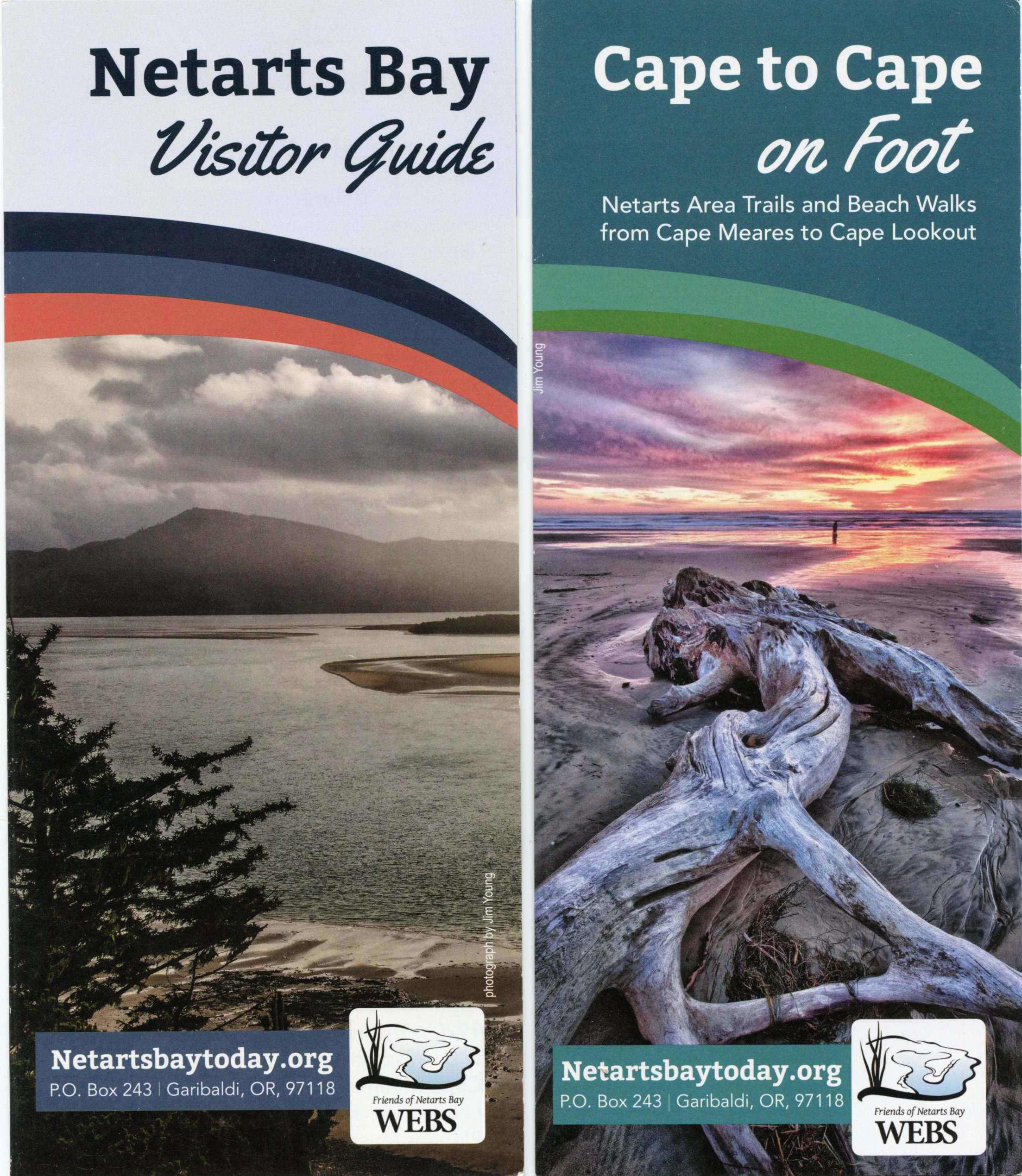The headlands at Yaquina Head, Cape Lookout, and Cape Meares, including the area near Oceanside, are the remnants of ancient volcanic islands that first flowed from fissures into an ancient sea 16 million years ago to form breccia and pillow lava. They were later covered with massive surface basalt flows and fragmental debris when the islands rose above the sea 14 million years ago. These rocks are equivalent in composition and age to the Grand Rhonde basalt so common in eastern Oregon and Washington and along the Columbia River Gorge. The rock is silica-rich tholeiitic basalt, near andesite in composition, with areas that are full of vesicles (gas bubbles) lined with zeolites, calcite, chalcedony, and clay. Zeolites are a group of about 90 species that are related by structure and chemistry. They normally are composed of a framework of silicon, oxygen, and water with various amounts of calcium, sodium, and potassium. Silica-rich zeolites such as erionite, clinoptilolite, mordenite, and dachiardite along with lower silica zeolites, phillipsite and chabazite, are found on a clay mineral in the vesicles. Colorless quartz variety agate also occurs in some of the vesicles. Erosion of this rock produces most of the agate found on Oregon beaches.
Zeolites were first collected in these rocks at a quarry near Cape Lookout in 1961 by John Cowles. Work in the early 1970’s by the author produced excellent specimens of erionite, dachiardite, clinoptilolite, and other minerals from Cape Lookout and Yaquina Head. At Yaquina Head, one boulder contained spectacular balls of erionite that resembled “fish eggs”. The area at Oceanside was explored at that time but was not extensively worked since it appeared to contain only weathered and stained clinoptilolite, mordenite, and erionite similar to the clean, fresh zeolites found in the quarries at Cape Lookout and Yaquina Head. In the spring of 1995, Aaron Weiting brought to my attention some spectacular green erionite balls similar to those found at Yaquina Head that he had found in boulders on Tunnel Beach and Short Beach. This report deals with the occurrence of the zeolites in the Oceanside area, which includes the beaches and cliffs extending from Oceanside in the south to Cape Meares in the north.
In the north, zeolites are found in rounded beach basalt that has eroded from the nearby cliffs along Short Beach, just south of Cape Meares. To reach the site, proceed from Oceanside, along the Three Capes Road, 1.1 miles to the 3.5-mile post and park at the low point along the road. Short Creek drains a small lake east of the road down to the beach on the west side of the road. Stairs and a trail have been made along the creek that leads from the road to the rocky beach below. If you miss the parking spot, 100 feet north of the creek, Radar Road turns to the west. Further up the road an active barren quarry is located along the road 0.6 miles from the creek. Erionite, clinoptilolite, mordenite, chabazite, phillipsite, chalcedony, and pyrite are found in the beach rock near the base of the trail and around the basalt cliffs to the south. A basalt hill or sea stack just off shore from the base of the trail is filled with colorless chalcedony nodules. Boulders to the far north along the beach nearest Cape Meares contain an abundance of clinoptilolite, mordenite, calcite, and chalcedony.

